33 Vegetables High in Fiber
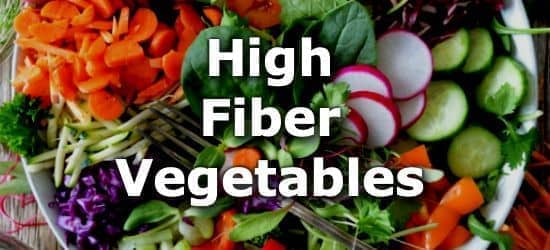
Vegetables are arguably the healthiest of all the food groups and are a great source of fiber.
Eating more fiber significantly decreases the risk of heart disease, colon cancer, and other serious medical conditions. (1) At the same time, a high fiber diet supports gut health.
Unfortunately, research has shown that only about 5% of the US population is currently meeting recommended targets for fiber intake. (2)
Vegetables high in fiber include lima beans, acorn squash, green peas, collard greens, artichokes, parsnips, broccoli, carrots, spinach, and more. The current daily value (DV) for fiber is 28 grams. (3)
Below is a list of 33 vegetables high in fiber. For more, see the article on high fiber foods and also the list of 200 fiber rich vegetables.
-
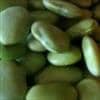 1. Lima (Butter) Beans
1. Lima (Butter) Beans
Fiber
per Cup CookedFiber
per 100gFiber
per 200 Calories9g
(33% DV)5g
(19% DV)9g
(31% DV) -
 2. Acorn Squash
2. Acorn Squash
Fiber
per Cup CookedFiber
per 100gFiber
per 200 Calories9g
(32% DV)4g
(16% DV)16g
(56% DV) -
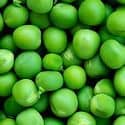 3. Green Peas
3. Green Peas
Fiber
per Cup CookedFiber
per 100gFiber
per 200 Calories9g
(31% DV)6g
(20% DV)13g
(47% DV) -
 4. Collard Greens
4. Collard Greens
Fiber
per Cup CookedFiber
per 100gFiber
per 200 Calories8g
(27% DV)4g
(14% DV)24g
(87% DV) -
 5. Artichokes (Globe or French)
5. Artichokes (Globe or French)
Fiber
in a Medium ArtichokeFiber
per 100gFiber
per 200 Calories7g
(25% DV)5g
(19% DV)23g
(82% DV) -
 6. Butternut Squash
6. Butternut Squash
Fiber
per Cup CookedFiber
per 100gFiber
per 200 Calories7g
(23% DV)3g
(11% DV)16g
(57% DV) -
 7. Parsnips
7. Parsnips
Fiber
per CupFiber
per 100gFiber
per 200 Calories7g
(23% DV)5g
(18% DV)13g
(47% DV) -
8. Kale
Fiber
per Cup CookedFiber
per 100gFiber
per 200 Calories5g
(19% DV)4g
(14% DV)22g
(79% DV) -
 9. Broccoli
9. Broccoli
Fiber
per Cup CookedFiber
per 100gFiber
per 200 Calories5g
(18% DV)3g
(12% DV)19g
(67% DV) -
 10. Carrots
10. Carrots
Fiber
per Cup CookedFiber
per 100gFiber
per 200 Calories5g
(17% DV)3g
(11% DV)17g
(61% DV) -
 11. Spinach
11. Spinach
Fiber
per Cup CookedFiber
per 100gFiber
per 200 Calories4g
(15% DV)2g
(9% DV)21g
(75% DV) -
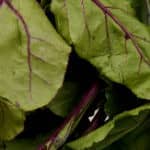 12. Beet Greens
12. Beet Greens
Fiber
per Cup CookedFiber
per 100gFiber
per 200 Calories4g
(15% DV)3g
(10% DV)21g
(77% DV) -
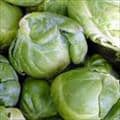 13. Brussels Sprouts
13. Brussels Sprouts
Fiber
per Cup CookedFiber
per 100gFiber
per 200 Calories4g
(14% DV)3g
(9% DV)14g
(52% DV) -
14. Green (Snap) Beans
Fiber
per Cup CookedFiber
per 100gFiber
per 200 Calories4g
(14% DV)3g
(11% DV)18g
(65% DV) -
 15. Okra
15. Okra
Fiber
per Cup CookedFiber
per 100gFiber
per 200 Calories4g
(14% DV)3g
(9% DV)23g
(81% DV) -
 16. Sweet Potatoes
16. Sweet Potatoes
Fiber
per CupFiber
per 100gFiber
per 200 Calories4g
(14% DV)3g
(11% DV)7g
(25% DV) -
 17. Swiss Chard
17. Swiss Chard
Fiber
per Cup CookedFiber
per 100gFiber
per 200 Calories4g
(13% DV)2g
(8% DV)21g
(75% DV) -
 18. Baked Potatoes
18. Baked Potatoes
Fiber
in a Medium PotatoFiber
per 100gFiber
per 200 Calories4g
(13% DV)2g
(8% DV)5g
(16% DV) -
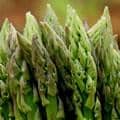 19. Asparagus
19. Asparagus
Fiber
per Cup CookedFiber
per 100gFiber
per 200 Calories4g
(13% DV)2g
(7% DV)18g
(65% DV) -
 20. White Button Mushrooms
20. White Button Mushrooms
Fiber
per Cup CookedFiber
per 100gFiber
per 200 Calories3g
(12% DV)2g
(8% DV)16g
(56% DV) -
 21. Turnips
21. Turnips
Fiber
per Cup CookedFiber
per 100gFiber
per 200 Calories3g
(11% DV)2g
(7% DV)18g
(65% DV) -
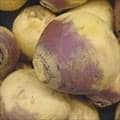 22. Rutabagas (Swedes, Neeps)
22. Rutabagas (Swedes, Neeps)
Fiber
per Cup CookedFiber
per 100gFiber
per 200 Calories3g
(11% DV)2g
(6% DV)12g
(43% DV) -
 23. Sweet Corn
23. Sweet Corn
Fiber
per Cup CookedFiber
per 100gFiber
per 200 Calories3g
(10% DV)2g
(7% DV)5g
(17% DV) -
 24. Fennel
24. Fennel
Fiber
per CupFiber
per 100gFiber
per 200 Calories3g
(10% DV)3g
(11% DV)20g
(71% DV) -
 25. Eggplant (Aubergine)
25. Eggplant (Aubergine)
Fiber
per Cup CookedFiber
per 100gFiber
per 200 Calories2g
(9% DV)3g
(9% DV)14g
(51% DV) -
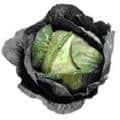 26. Cabbage
26. Cabbage
Fiber
per Cup RawFiber
per 100gFiber
per 200 Calories2g
(8% DV)3g
(9% DV)20g
(71% DV) -
 27. Cauliflower
27. Cauliflower
Fiber
per CupFiber
per 100gFiber
per 200 Calories2g
(8% DV)2g
(7% DV)16g
(57% DV) -
 28. Zucchini (Courgette)
28. Zucchini (Courgette)
Fiber
per Cup CookedFiber
per 100gFiber
per 200 Calories2g
(6% DV)1g
(4% DV)13g
(48% DV) -
29. Tomatoes
Fiber
per Cup CookedFiber
per 100gFiber
per 200 Calories2g
(6% DV)1g
(4% DV)13g
(48% DV) -
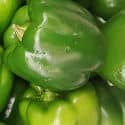 30. Green Bell Peppers
30. Green Bell Peppers
Fiber
per Cup CookedFiber
per 100gFiber
per 200 Calories2g
(6% DV)1g
(4% DV)9g
(31% DV) -
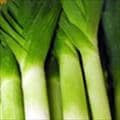 31. Leeks
31. Leeks
Fiber
per CupFiber
per 100gFiber
per 200 Calories2g
(6% DV)2g
(6% DV)6g
(21% DV) -
 32. Celery
32. Celery
Fiber
per Cup RawFiber
per 100gFiber
per 200 Calories1g
(4% DV)2g
(6% DV)23g
(82% DV) -
33. Lettuce
Fiber
per CupFiber
per 100gFiber
per 200 Calories1g
(4% DV)2g
(8% DV)25g
(88% DV)
How much fiber do you need each day?
The daily value (DV) for fiber is 28 grams per day. (3) This is the amount shown on food labels to help the average person compare the health benefits of different foods. However, for many people, this amount is actually too low.
The adequate intake (AI) is a more accurate daily target, and varies by age and gender. The AI for fiber is up to 38 grams per day. (4) We've included the specific values below for various groups below, so you can determine what your personal target should be.
In the US, the average person consumes far less than the DV for fiber, let alone the AI for their demographic group.
The Percent Daily Value (%DV) is shown on food labels to help the "average" consumer compare foods, while the adequate intake (AI) is meant to give people a more accurate daily target by age and gender. In this case, the daily value for fiber is probably set too low and should be revised higher by the FDA.
Here is the breakout of the adequate intake by age and gender for fiber: (4)
| Life Stage | RDA |
|---|---|
| Children | |
| 1-3 years old | 19g |
| 4-8 years old | 25g |
| Males | |
| 9-13 years old | 31g |
| 14-50 years old | 38g |
| 50+ years old | 30g |
| Females | |
| 9-18 years old | 26g |
| 19-50 years old | 25g |
| 50+ years old | 21g |
| Pregnancy | |
| 14-50 years old | 29g |
| Lactation | |
| 14-50 years old | 29g |
From the Nutrient Ranking Tool
Use the ranking tool links below to select foods and create your own food list to share or print.
- Foods High in Fiber
- Foods Low in Fiber
- Vegetables High in Fiber
- Fruits High in Fiber
- Vegetarian Foods High in Fiber
- Nuts High in Fiber
- Grains High in Fiber
- Beans High in Fiber
- Breakfast Cereals High in Fiber
- Fast Foods High in Fiber
View more nutrients with the nutrient ranking tool, or see ratios with the nutrient ratio tool.
Related
Data Sources and References
- Thomas M. Barber, Stefan Kabisch, Andreas F. H. Pfeiffer and Martin O. Weickert The Health Benefits of Dietary Fibre Nutrients. 2020 Oct; 12(10): 3209.
- Diane Quagliani, MBA, RDN, LDN and Patricia Felt-Gunderson, MS, RDN, LDN Closing America’s Fiber Intake Gap Am J Lifestyle Med. 2017 Jan-Feb; 11(1): 80–85. Published online 2016 Jul 7. doi: 10.1177/1559827615588079
- FDA on Daily Values
- Institute of Medicine Dietary Reference Intakes
- U.S. Agricultural Research Service Food Data Central
Try the recipe nutrition calculator, or daily meal planner.
Create a free account to log and track foods.


 Next ➞
Next ➞